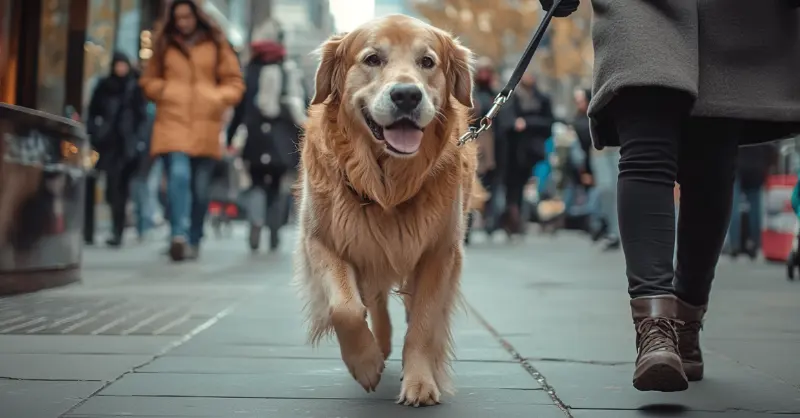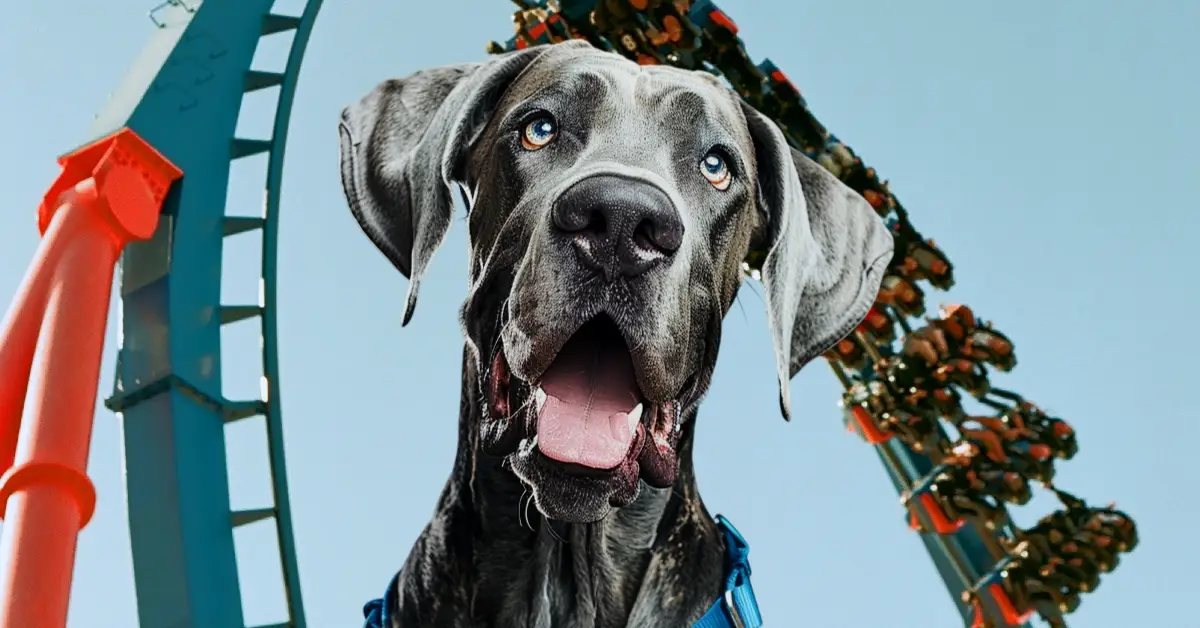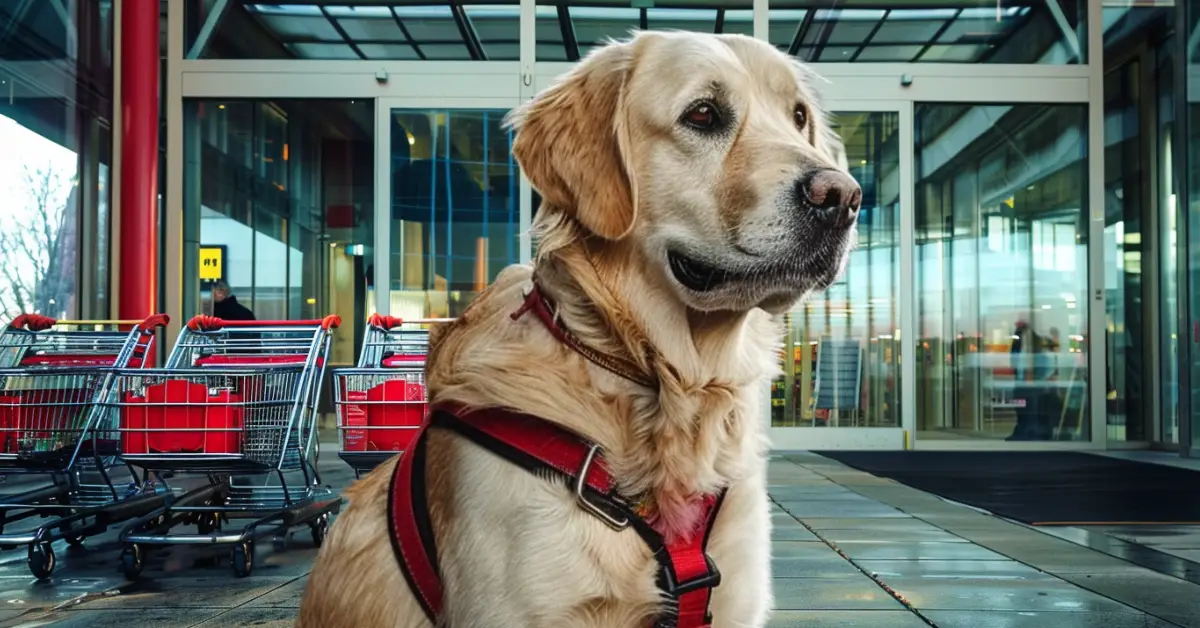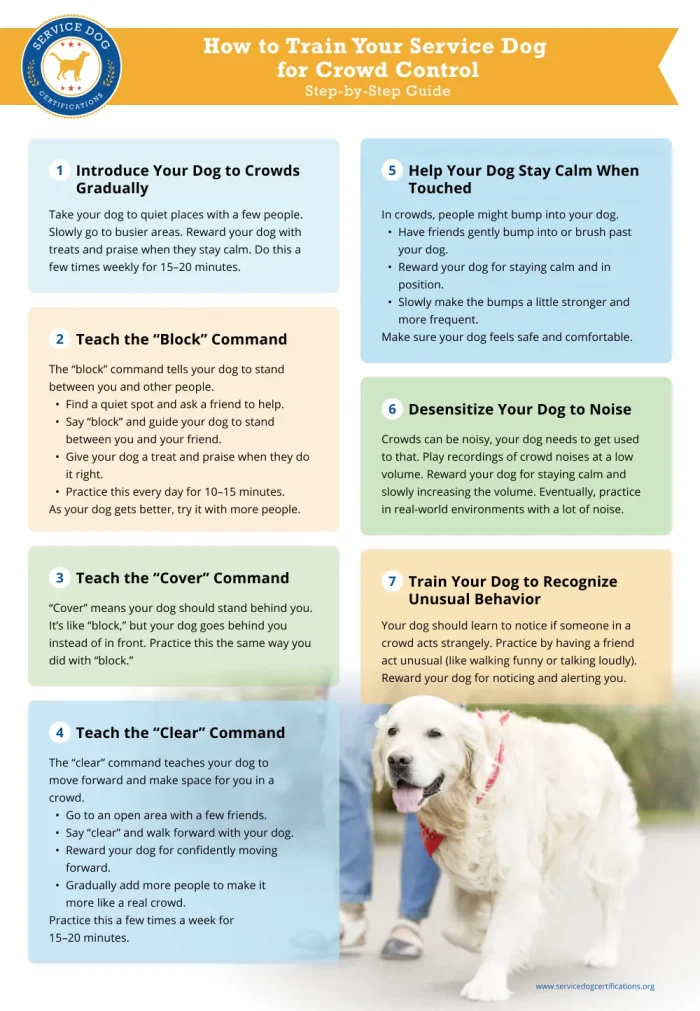How to Train Your Service Dog for Crowd Control

For individuals with anxiety disorders and physical disabilities, navigating busy, crowded environments can be overwhelming and even dangerous. Service dogs trained for crowd control can help their handlers feel safe, maintain personal space, and avoid stressful or harmful encounters. In this guide, you’ll learn how to train your service dog to perform crowd control tasks and understand the importance of this type of service dog for certain disabilities.
Steps for Training Service Dog Crowd Control: A Step-by-Step Guide
- Introduce Your Dog to Crowds Gradually
Start by taking your dog to quiet places with just a few people. Slowly work your way up to busier areas. Reward your dog with treats and praise when they stay calm. Do this a few times weekly for about 15-20 minutes each time. - Teach the “Block” Command
The “block” command tells your dog to stand between you and other people. Here’s how to teach this step:- Find a quiet spot and ask a friend to help.
- Say “block” and guide your dog to stand between you and your friend.
- Give your dog a treat and lots of praise when they do it right.
- Practice this every day for about 10-15 minutes.
- As your dog gets better, try it with more people around.
- Teach the “Cover” Command
“Cover” means your dog should stand behind you. It’s like “block,” but your dog goes behind you instead of in front. Practice this the same way you did with “block.” - Teach the “Clear” Command
The “clear” command teaches your dog to move forward and make space for you in a crowd. Here’s how to practice:- Go to an open area with a few friends.
- Say “clear” and walk forward with your dog.
- Reward your dog for confidently moving forward.
- Gradually add more people to make it more like a real crowd.
- Practice this a few times a week for about 15-20 minutes each time.
- Help Your Dog Stay Calm When Touched
In crowds, people might bump into your dog. To prepare for this:- Have friends gently bump into or brush past your dog.
- Reward your dog for staying calm and in position.
- Slowly make the bumps a little stronger and more frequent.
- Always make sure your dog feels safe and comfortable.
- Desensitize Your Dog to Noise
Crowds can be noisy, so your dog needs to get used to that. Start by playing recordings of crowd noises at a low volume. Reward your dog for staying calm and slowly increasing the volume over time. Eventually, practice in real-world environments with a lot of noise. - Train Your Dog to Recognize Unusual Behavior
Your dog should learn to notice if someone in a crowd is acting strangely. Practice by having a friend act unusual (like walking funny or talking loudly). Reward your dog for noticing and alerting you.
Share this image on your site
Once your dog knows all these skills, practice them in different places with more distractions. This helps your dog learn to do the tasks anywhere, anytime. Be patient and understand that it may take months to fully train a service dog for crowd control tasks. Regular training sessions will help reinforce these skills. Always reward your dog with treats and praise, and never use punishment.
If your dog becomes stressed, take a step back or switch to less challenging tasks to avoid burnout. Finally, familiarize yourself with service dog requirements to ensure you know your rights when someone asks about your service dog’s presence.
Reasons for Needing a Crowd Control Service Dog
Crowded spaces can cause anxiety, panic, or even physical harm for people with various conditions. Psychiatric service dogs are often utilized for crowd control work. Here are some common reasons someone might require a service dog trained in crowd control:
- Anxiety or Panic Disorders
Crowds can trigger overwhelming anxiety or panic attacks. An anxiety service dog can create space and act as a calming presence. - Post-Traumatic Stress Disorder (PTSD)
For individuals with PTSD, crowded environments can lead to flashbacks, hypervigilance, and feelings of being trapped. A service dog helps by creating a buffer zone between the handler and others. - Autism Spectrum Disorder (ASD)
Crowds can be overstimulating for people with autism, leading to sensory overload or meltdowns. Service dogs trained in crowd control can help prevent sensory overload and reduce stress. - Mobility Issues
For people with difficulty moving around or balance issues, crowds pose a risk of falls or injuries. A service dog can help clear a path and offer stability. - Social Phobia
Crowds can heighten fear or discomfort in social situations. A dog trained in crowd control can ease the handler’s anxiety by ensuring others maintain an appropriate distance.
Here are some everyday situations where a crowd control service dog could be particularly helpful:
- Concerts or Festivals
Crowded events with loud noises can cause panic attacks or disorientation. A service dog can guide the handler to a less crowded area. - Shopping Malls or Grocery Stores
For someone with PTSD, crowded aisles might trigger feelings of being cornered or trapped. A service dog can create a buffer by standing between the handler and others. - Public Transportation
During busy commutes, a service dog trained in blocking or covering techniques can provide reassurance and help the handler maintain personal space.
Training a service dog for crowd control can significantly improve the quality of life for people with certain disabilities. Following these steps will help your dog develop the necessary skills to provide comfort and safety in crowded environments. The Americans with Disabilities Act allows you to self-train a service dog, but if you feel uncertain about any part of the training process, consult a professional trainer specializing in service dogs for guidance.
About the Author: The writing team at Service Dog Certifications is made up of folks who really know their stuff when it comes to disability laws and assistance animals. Many of our writers and editors have service dogs themselves and share insights from their own experiences. All of us have a passion for disability rights and animals.
Latest Posts

Can you bring a service dog to a museum?
Yes, you can bring your service dog to the museum! All the major U.S. museums welcome guests with service animals in accordance with the Americans with Disabilities Act (ADA). There are some areas, however, that might be off-limits. Here’s what you should know if you plan to spend a day at the museum with your […]

Read More

How to Bring a Service Dog to Six Flags Magic Mountain
Service dogs are welcome at Six Flags Magic Mountain so long as they are, according to Six Flags, “trained to do work or perform tasks for people with disabilities.” Of course, your dog must be housebroken and remain on a leash or harness and under your control while at the park — and the park […]

Read More

When Stores Can Refuse Your Service Dog
According to the Americans with Disabilities Act (ADA), service dogs should be allowed into any store most of the time. A store owner can legally exclude a service dog if they are actively growling, snapping at, or frightening customers, or if the dog is obviously out of the control of its owner. Ordinary behaviors — […]

Read More
